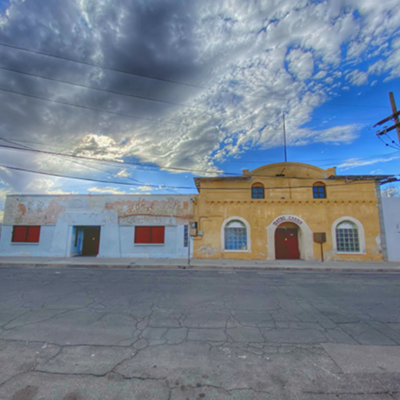Looking to save some money? A little-known window of opportunity is about to open to lower the cost of monthly sewer bills. The savings may not be great, but in this depressed economy, every little bit helps.
Earlier this year, Pima County imposed a 45 percent rate increase on sewer charges. (See "Holy Crap!" Jan. 29.) This was just the latest in a series of nine sewer-user changes made since 2002—and now, some consumers can fight back.
Sewer charges are based on the total amount of water a household or business uses. But instead of varying the charges month by month, an average is established by the Pima County Regional Wastewater Reclamation Department (PCRWRD). This average is based on the amount of water used by each household and business in December through February. This average is then employed by PCRWRD the following July to calculate sewer charges for the coming 12 months.
However, snowbirds and others who may be out of town during the scorching summer aren't penalized by this system. As Jeff Nichols of PCRWRD explains: "The bill is the lower of the winter average or the actual (monthly) use (during a month)."
There's even an appeals procedure available for the winter-months averaging process. Check it out at dot.pima.gov/wwm/apps/sewerbillingappeal.
The winter months are typically the lowest period for outdoor watering by most users, which translates into the lowest amount of water used during the year. According to figures supplied by Tucson Water, the usage in January, February and December 2008 was more than 20 percent lower than any other three-month period.
For households, the current average monthly use for the three winter months is 7,480 gallons. That translates into a typical sewer bill of almost $30 a month—an amount that can be lowered by reducing winter water use.
As an example, if average winter water usage is cut in half, the monthly sewer bill would drop to $19. That's a savings of $132 over a year. (Of course, if everyone reduced his or her water usage by approximately the same amount, no one would save much, if anything, because everyone would be using the same percentage of water compared to everyone else.)
Another way some people can save money on their sewer costs is to sign up for Pima County's bill-assistance program. This effort is directed at households in which people earn up to 150 percent of the federal poverty income. For a family of four, this monthly amount is currently $1,838, or $22,050 a year. The monthly sewer rates for households can be reduced by as much as two-thirds, a savings of $19 a month.
For those interested, more information is available by calling the Pima County Community Action Agency at 243-6794.
In addition to the variable sewer charge, there is also a set service fee on the sewer bill. This $8.32 fee, according to Nichols, pays for both fixed costs of the system and administrative costs such as the expense of billing charged by the four water providers which PCRWRD deals with. These agencies are Tucson Water, Marana, Oro Valley and Metro Water, which mail out combined water/sewer bills.
Commercial sewer users are now treated the same as residential customers: They also pay a charge based on water usage from December through February. But Nichols says his department is considering revising its approach for commercial users. He says the Pima County Board of Supervisors may be asked to change this early next year.
"We're looking at actual water use," Nichols says of business customers. "So their bills would change monthly."






